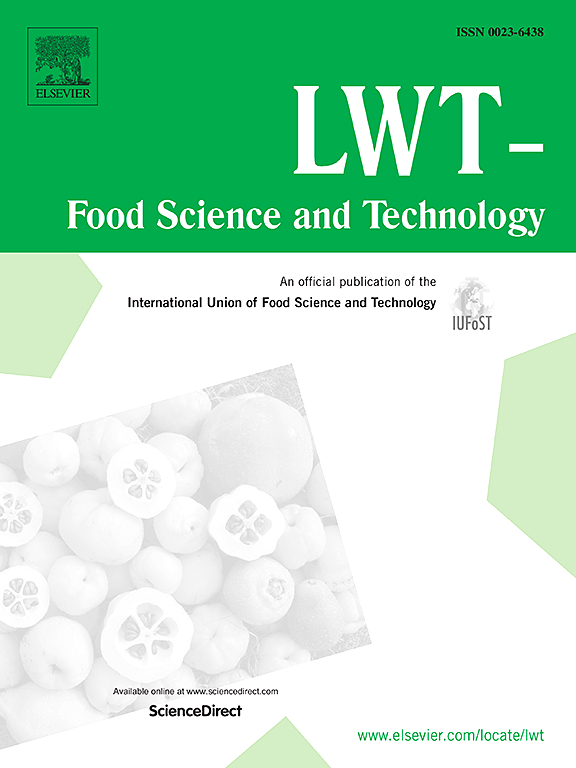Impact of the particle size of milled wheat ingredients of wire-cut cookies on their glycaemic response: A randomised cross-over human intervention study
IF 6
1区 农林科学
Q1 FOOD SCIENCE & TECHNOLOGY
引用次数: 0
Abstract
High postprandial glycaemic responses are a disease risk factor. The endosperm cells in wheat farina are more intact than those in flour and their starch is somewhat protected from digestion. The impact of partially replacing flour by farina in wire-cut cookies on in vitro starch digestion and in vivo postprandial glycaemic response (PPGR) was examined. Healthy participants (n = 55) on 2 days consumed 85 g of control or test cookies in which 65% flour was replaced by farina (both containing 35 g starch). We measured oral processing behaviour and gastric emptying to exclude confounding the primary outcome. Test cookie was digested in vitro to lower extent than control (57.7 ± 0.3% vs 70.0 ± 0.4, p < 0.01), and contained more slowly digestible starch (23 vs 12 g/100 g). Blood glucose response was lower after 90 (p < 0.01) and 120 min (p < 0.01) despite no difference in the overall PPGR. Despite different bolus particle sizes and degrees of saliva incorporation between control and test cookie, gastric emptying rate and oral processing parameters were not different. In conclusion, partially replacing flour by farina significantly increased the in vitro SDS content, but did not substantially improve the PPGR.
求助全文
约1分钟内获得全文
求助全文
来源期刊

LWT - Food Science and Technology
工程技术-食品科技
CiteScore
11.80
自引率
6.70%
发文量
1724
审稿时长
65 days
期刊介绍:
LWT - Food Science and Technology is an international journal that publishes innovative papers in the fields of food chemistry, biochemistry, microbiology, technology and nutrition. The work described should be innovative either in the approach or in the methods used. The significance of the results either for the science community or for the food industry must also be specified. Contributions written in English are welcomed in the form of review articles, short reviews, research papers, and research notes. Papers featuring animal trials and cell cultures are outside the scope of the journal and will not be considered for publication.
 求助内容:
求助内容: 应助结果提醒方式:
应助结果提醒方式:


